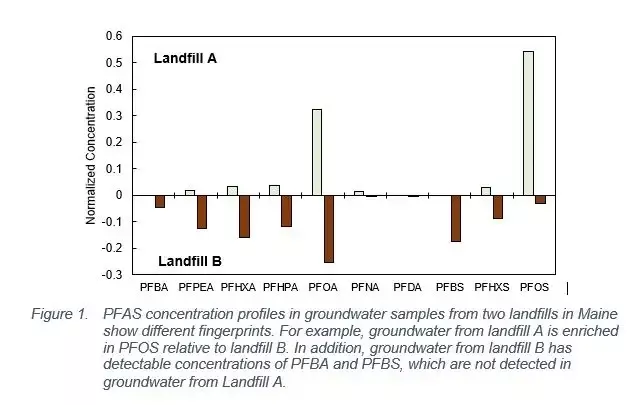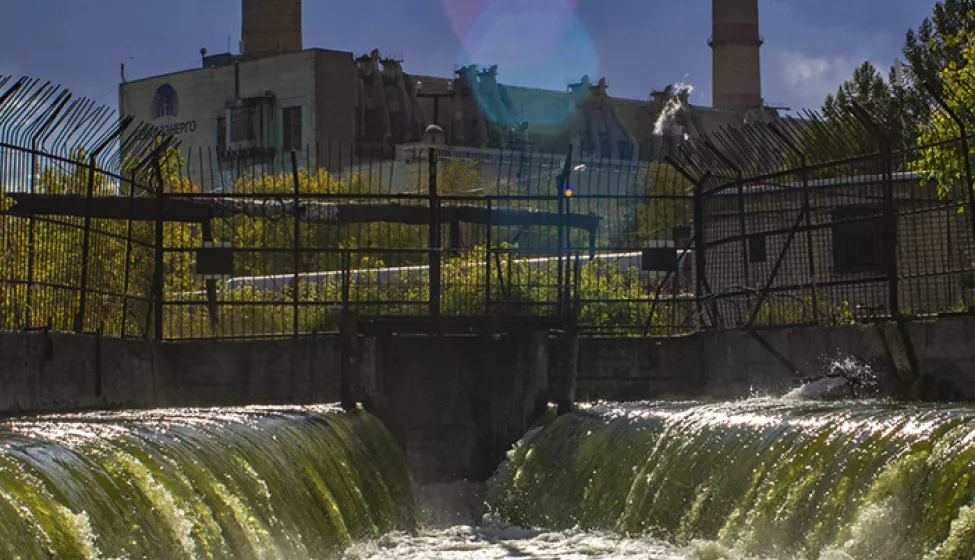May 13, 2021
The use of per- and polyfluoroalkyl substances (PFAS) in a number of industrial operations has resulted in PFAS becoming the focus of new regulations, with concentrations in environmental samples being compared with recently developed numeric standards and guidelines. Over the past 10 years, landfills, military installations, airports, industrial sites, and public water supplies across the U.S. have been sites of environmental PFAS investigations.
As with other contaminants (e.g., PCBs, solvents, PAHs), some of the questions surrounding PFAS are related to sources, concentrations at exposure points, and apportionment/allocation among responsible parties. Answering these questions requires understanding PFAS historical uses and formulations, fate and transport characteristics, weathering effects, and laboratory advances to analyze for non-target (i.e., not traditionally analyzed for) PFAS compounds, all of which are components of chemical forensics.
Despite the evolving understanding of the nature of PFAS contamination, the science of chemical forensics offers established techniques for addressing several PFAS-related questions when facing potential PFAS liabilities.
Using Chemical Forensics to Identify PFAS Sources
The foundation of chemical forensic analysis is high-quality analytical data. Recent advances in PFAS analytics have increased detection and differentiation capabilities, thereby expanding the list of compounds that can be targeted from two (PFOS and PFOA) to a larger set of PFAS compounds. Analyzing for several PFAS compounds provides opportunities to better identify combinations that may act as PFAS fingerprints in environmental samples and ultimately help identify potential PFAS sources.
Environmental weathering processes (e.g., dissolution, water washing, and evaporation) and their effects on source identification need to be considered in fingerprinting investigations. One way to consider weathering is to evaluate the stability of PFAS fingerprints over time using several sampling rounds at fixed monitoring locations.
In situations where PFAS sources have different signatures, PFAS fingerprinting analysis can provide a robust scientific basis for discerning sources. Figure 1 shows an example of distinct PFAS fingerprints in groundwater samples from two different landfills in Maine.
The difference between the two landfill groundwater fingerprints is likely a function of the waste material received by the individual landfills. In other words, despite similar general functions as landfills, PFAS coming from these sources would reflect the particular waste profile in them, and a source-specific PFAS fingerprint could be useful for source identification in groundwater locations downgradient from the landfills.

PFAS Fingerprinting Tools
Once PFAS concentration data are assembled for a site in question, investigators can apply statistical techniques, machine learning, artificial intelligence, and other advanced analytical tools to track potential PFAS sources and their spatial and temporal extents of impact in an environment.
Coupled with other analyses (e.g., reconstructing the history of site operations and PFAS uses, identifying site-specific PFAS sources, evaluating likely weathering effects), fingerprinting could help investigators understand whether a particular industrial source contributed to PFAS contamination at a given site, and if so, to what extent.
Historical reconstruction of industrial operations may not only apply to one entity or operation but can also include adjacent operations and analysis of regional background levels as well.
Assessing PFAS Liability
By understanding site-specific fingerprints and area-wide operations, stakeholders can better understand the nature and extent of their potential PFAS liabilities.
In situations where different PFAS sources have impacted a site (e.g., a groundwater plume), chemical fingerprinting can help identify the relative contribution from different parties by unmixing the impacts from different sources and thereby supporting apportionment of contamination.
However, unmixing PFAS impacts may not be fully technically feasible, such as in situations where similar operations impacted the same groundwater plume or landfills, or wastewater treatment plants received comingled PFAS-containing wastes. In those situations, additional technical and non-technical factors can be applied.
How Exponent Can Help
Because understanding PFAS liability may not be straightforward, involved parties need to be well informed of the technical and analytical foundation for determining source information. A first step is typically evaluating the strengths and limitations of available PFAS data to determine whether additional information is needed and why.
For decades, our team at Exponent has specialized in advising clients throughout the investigation process on the full range of technical issues associated with contaminated sites. For PFAS, our team advises clients on topics, such as:
- Fate and transport of PFAS compounds in different environmental media
- Assessing the impact of the evolving scope of definitions and regulations related to PFAS
- Fingerprinting analysis to track potential sources
- Reconstruction of industrial operations and evaluation of PFAS compounds used
- Potential environmental impacts and liabilities
- Technical apportionment and allocation of contamination among responsible parties
- Proactive evaluation of PFAS compliance and mitigation of risks posed by current manufacturing processes.

